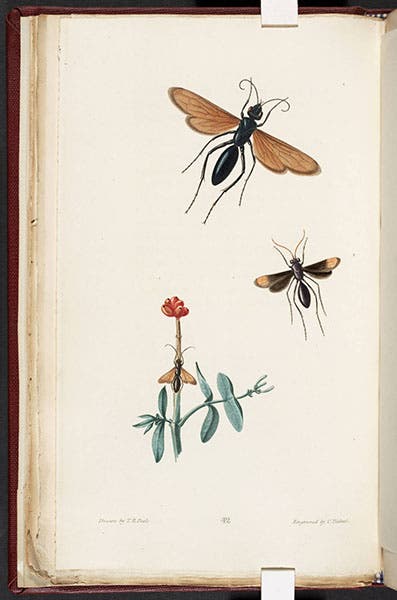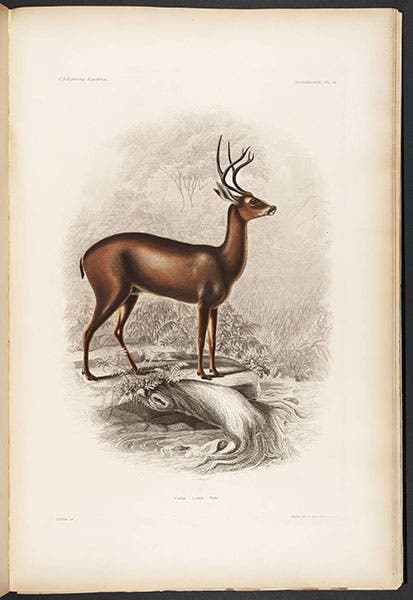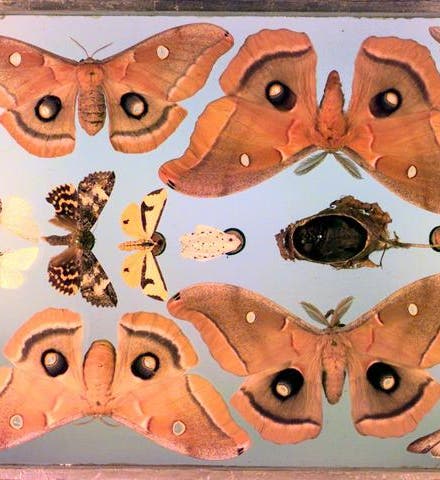Scientist of the Day - Titian Ramsay Peale
Titian Ramsay Peale, an American painter, was born Nov. 2, 1799. Peale was the youngest of the artistic sons of Charles Willson Peale, the others being Rembrandt, Raphaelle, and Rubens. Most of the Peales were portrait artists, but Titian is best known as a scientific illustrator. He was a member of Stephen Long’s expedition to the Rockies in 1820 and made many of the illustrations later published by the expedition zoologist, Thomas Say, such as the Tarantula Hawk wasp (second image).

Tarantula hawk wasp, illustrated by Titian Peale, from Thomas Say, American Entomology, 1824 (Linda Hall Library)
Nearly twenty years later, Titian was naturalist and artist for the United States Exploring Expedition (1838-42), which sailed on a southerly route around the globe, collecting specimens in the Pacific Northwest, Antarctica, and many places in between. The narrative of the expedition was supplemented by a number of folio volumes with illustrations, and the volume on mammals and birds contains quite a few plates based on Titian Peale’s sketches and paintings, such as the Black-Tailed Deer (third image).

Black-tailed deer, drawn by Titian Peale, from John Cassin, Mammalogy and Ornithology, 1858 (Linda Hall Library)
We displayed two of these in our 2004 exhibition, Science Goes West, which is not available online. But we also included an illustration by Peale in our Ice exhibition of 2008, showing a Snow Petrel posing before an Antarctic landscape, and that one you can see online.
Peale also had a lifelong interest in butterflies and moths, and he collected and mounted them in almost one hundred boxes, which are still preserved in the Academy of Natural Sciences of Drexel University in Philadelphia; we reproduce above Box 7, a collection of Polyphemus moths (first image).
The academy also has 15 plates by Peale for a projected book on American Lepidoptera, never published, including one showing Io moths (fourth image), and a lithographed portrait of Titian, after an oil portrait made by Charles Willson Peale (fifth image).
Dr. William B. Ashworth, Jr., Consultant for the History of Science, Linda Hall Library and Associate Professor, Department of History, University of Missouri-Kansas City. Comments or corrections are welcome; please direct to ashworthw@umkc.edu.







